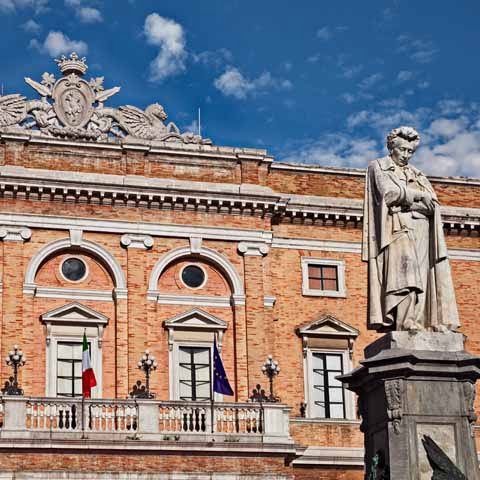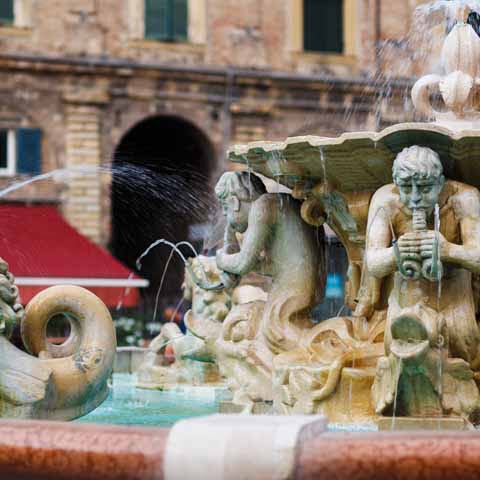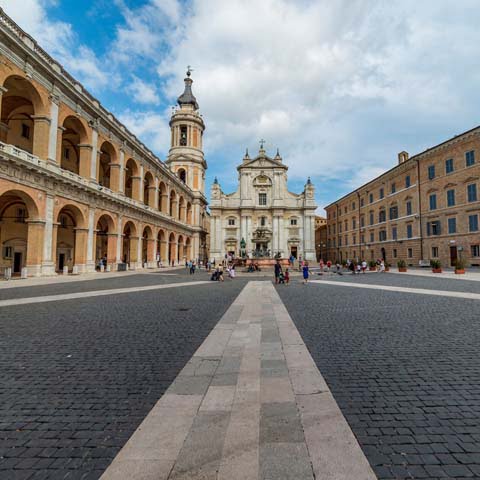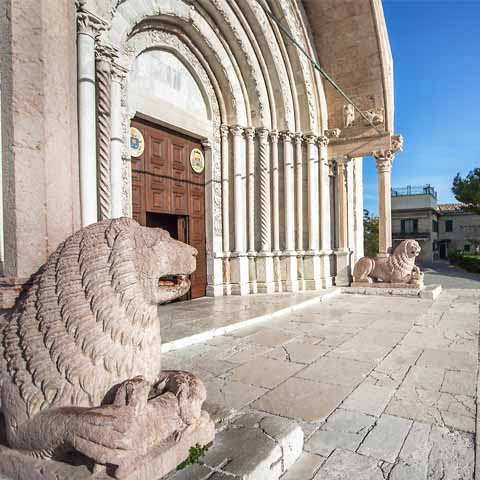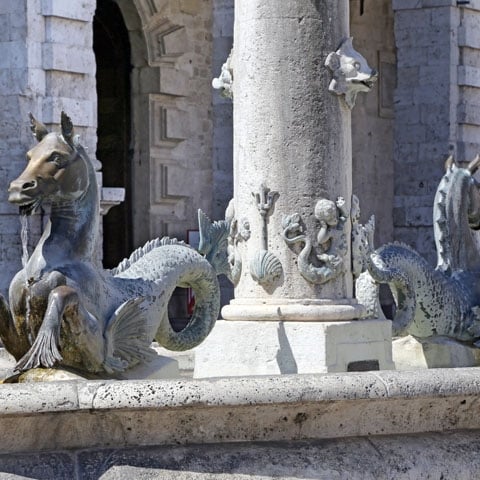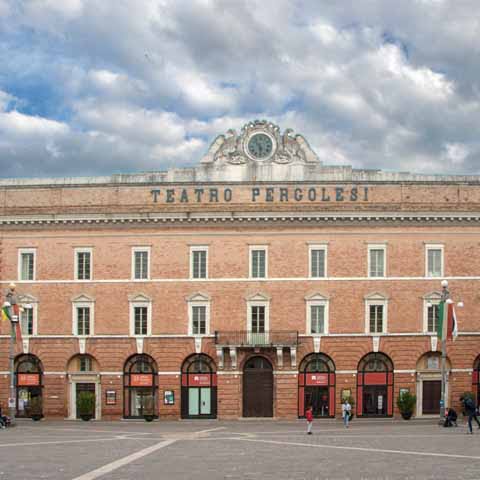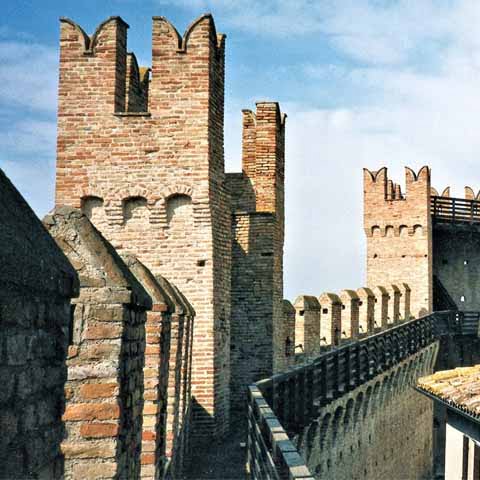Culture is not only prevalent but grandly flourishes in the region of Marche, Italy with more than two hundred museums and one hundred theaters, with seventy-one of them being historic. Perhaps equally important is the preservation of a long standing tradition of gathering locals and visitors to savor their time together over customary cuisine. To tour Marche is not just to visit famous locales, it is to experience life deliberately and pause to take in the simple life.
Marche and its inhabitants are widely influenced by their proximity to the regions of Tuscany and Umbria. Customs such as gathering friends and family in the piazza to sip a hot coffee and sparkling wine or simply living life at a pleasantly slow pace are largely due to the influence of those regions. Emilia Romagna is yet another region that influences Marche through hearty and delicious cuisine as well as a shared passion for motorsports. In fact, Valentino Rossi, one of the greatest motorsport riders of all time was born in Pesaro.
Rossi is not the only big name to come from this region. Many larger than life personalities of Italian culture were born in Marche including nineteenth century scholar and poet Giacomo Leopardi, classical and comic opera composer Gioacchino Rossini, and Italian physician and educator Maria Montessori.
ART
Historically, art flourished in Marche, primarily during the early fifteenth century and High Renaissance period. These eras yielded critically acclaimed artists whose legacies have forever impacted the culture and tradition of the region.
Gentile da Fabriano, whose real name was Niccolò di Giovanni di Massio was born in Fabriano, Marche. The artist is considered to be the foremost painter of central Italy from the early fifteenth century. His few surviving works are held in high esteem as some of the finest preserved examples of Gothic style. His masterpiece is the Adorazione dei Magi, which can be found in the church of Santa Trinita in Florence.
Italian painter and architect of the High Renaissance, Raffaello Sanzio, is universally considered to be one of the leading figures of the Renaissance and one of the most important artists of all time. Born in Urbino, Italy, the young artist wasted no time in becoming an apprentice to renowned Italian Renaissance artist, Pietro Perugino. During the early 1500s, Sanzio began painting a series of impressive paintings called “Madonnas.” Nearly a decade before passing at the early age of 37, the artist painted Stanza della Segnatura, or Room of the Signatura, in the Vatican. This last work was a gorgeous fresco, or watercolor painting done on wet plaster to ensure the permanent absorption of color. His works are so acclaimed that even today Sanzio is regarded as one of the most famous artists of the High Renaissance.
ARCHITECTURE
Architect Donato Bramante, also known as Donino or Donnino, introducted High Renaissance style in his works. Early examples of Bramante’s works can be seen in Milan, including the rectory of Sant’Ambrogio and the church of Santa Maria delle Grazie. While in Rome, the architect served as a lead in planning Pope Julius II’s rebuild of the city. Perhaps one of Bramante’s best known works is the St. Peter’s Basilica for which he served as the chief architect when construction began in 1506.
The historical section of Ascoli Piceno showcases buildings made of travertino, a gray colored stone taken from mountains surrounding the town. The Piazza Arringo was the religious and administrative heart of the town and still today the area is home to more than a dozen beautiful churches with deep historical roots. Also at home in Ascoli Piceno is Ventidio Basso Theater, a neoclassical building that is a communal theater, concert hall, and opera house.
LITERATURE
As evidence of the literary giants and deep thinkers originating in Marche, the region was home to poets, philosophers, and even doctors unafraid to challenge their ways of thinking and share them with the world.
Poet, scholar, and philosopher Giacomo Leopardi was born in Recanati, Marche in 1798. The writer’s scholarly and philosophical pieces as well as his innovative poetry are evidence of his ability to challenge widely accepted thoughts. Leoparid’s genius shone brightly when he utilized his frustrations from home and pain from a suspected case of tuberculosis to compose poetry. Among his finest poems are early editions of his poetry such as “Idillii.” His poetry is best known for its unparalleled brilliance and musicality. Leopardi is regarded as one of the most radical and free thinking writers of the nineteenth century.
Female physician, educator, and innovator Maria Montessori was a pioneer in her theories of childhood education in the 1920s. During World War II, she developed education for peace in India earning her several Nobel Peace Prize nominations. Her education theories which far surpassed like theories of her time are still taught and implemented in Montessori schools worldwide today. Her career ambitions and forward thinking made her a refreshing anomaly for society at that time.
MUSIC
Composers, operatic tenors, and conductors historically played a rather large role in defining the music of Marche, Italy.
Nineteenth century composer Gioacchino Antonio Rossini was famous for his operatic productions. Yet perhaps he was best known for his comic operas such as The Barber of Seville, Cinderella, and Semiramide. In later years, his larger-scale dramatic opera William Tell drew wide critical acclaim. Rossini is considered somewhat of a symbol of Pesaro where he and his works are annually celebrated with a musical festival.
Operatic tenor Beniamino Gigli is regarded as one of the greatest Italian operatic tenors of the early twentieth century. His lyrical notes stunned audiences with a range of intense power to soft mellowness, all within the confines of the smoothest of productions. Although his acting left much to be desired and his musical taste was not well regarded, his natural musicianship and charm held his audiences delightfully captive.
Present day Italian pianist and composer Giovanni Allevi was born in Ascoli Piceno in 1969. Allevi can be found opening for rock concert audiences with only his piano. He is also well known for famous non- compositions such as Inno delle Marche (Hymn of the Marche region), Angelo Ribelle (Rebel Angel), 300 Anelli (300 Rings), Foglie di Beslan (Beslan’s Leaves), and musical comedy Sparpagghiò. He is considered by locals to be one of the most pure and uninfluenced composers on the international scene today.
Whether you seek the grand architecture, musical masterpieces, fine literature, or timeless art, you can find each of these tucked away in the charming, historical cities and towns of Marche.
